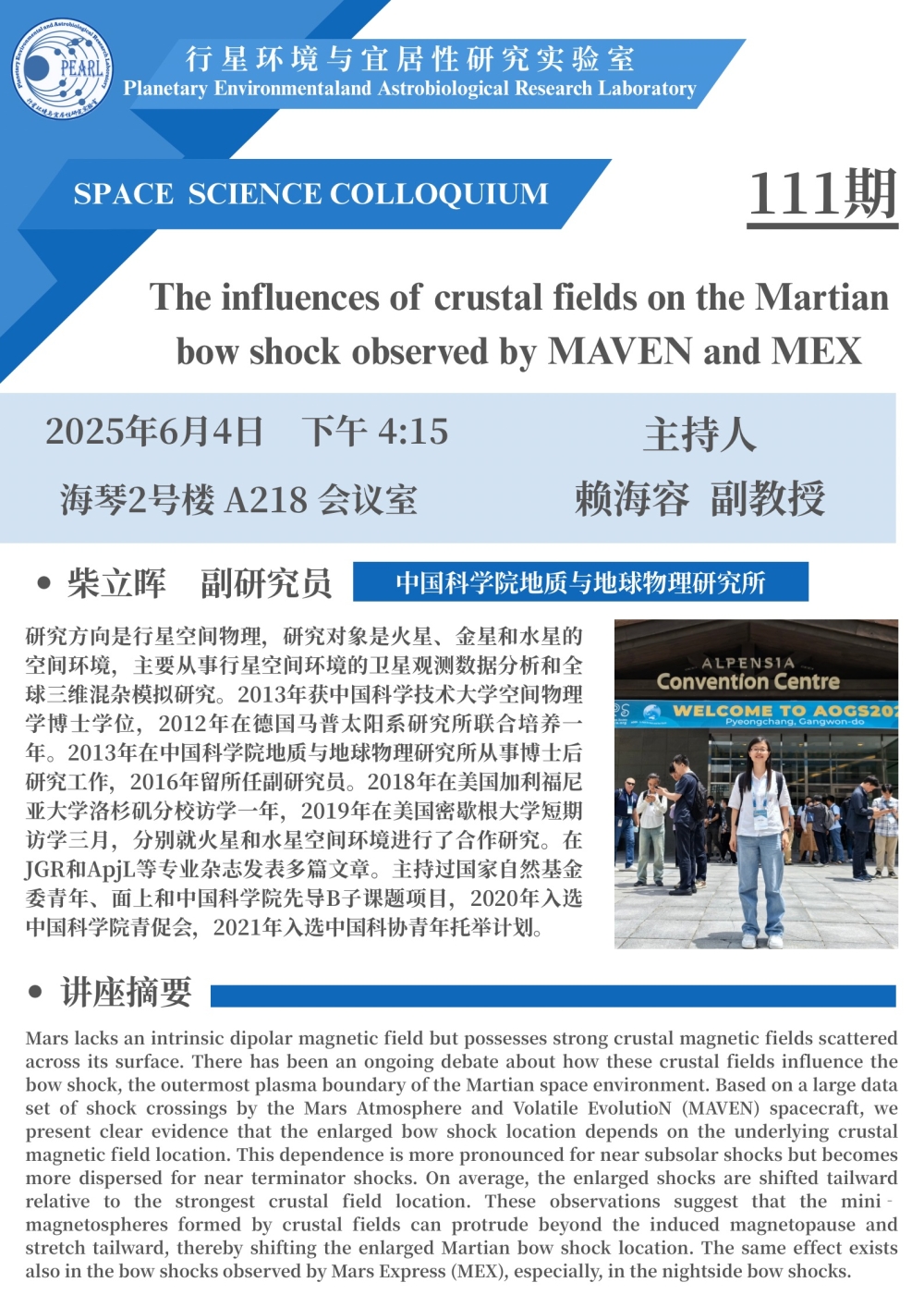The influences of crustal fields on the Martian bow shock observed by MAVEN and MEX
The influences of crustal fields on the Martian bow shock observed by MAVEN and MEX
报告人:柴立晖 中国科学院地质与地球物理研究所副研究员
研究方向是行星空间物理,研究对象是火星、金星和水星的空间环境,主要从事行星空间环境的卫星观测数据分析和全球三维混杂模拟研究。2013年获中国科学技术大学空间物理学博士学位,2012年在德国马普太阳系研究所联合培养一年。2013年在中国科学院地质与地球物理研究所从事博士后研究工作,2016年留所任副研究员。2018年在美国加利福尼亚大学洛杉矶分校访学一年,2019年在美国密歇根大学短期访学三月,分别就火星和水星空间环境进行了合作研究。在JGR和ApjL等专业杂志发表多篇文章。主持过国家自然基金委青年、面上和中国科学院先导B子课题项目,2020年入选中国科学院青促会,2021年入选中国科协青年托举计划。
报告摘要:Mars lacks an intrinsic dipolar magnetic field but possesses strong crustal magnetic fields scattered across its surface. There has been an ongoing debate about how these crustal fields influence the bow shock, the outermost plasma boundary of the Martian space environment. Based on a large data set of shock crossings by the Mars Atmosphere and Volatile EvolutioN (MAVEN) spacecraft, we present clear evidence that the enlarged bow shock location depends on the underlying crustal magnetic field location. This dependence is more pronounced for near subsolar shocks but becomes more dispersed for near terminator shocks. On average, the enlarged shocks are shifted tailward relative to the strongest crustal field location. These observations suggest that the mini‐magnetospheres formed by crustal fields can protrude beyond the induced magnetopause and stretch tailward, thereby shifting the enlarged Martian bow shock location. The same effect exists also in the bow shocks observed by Mars Express (MEX), especially, in the nightside bow shocks.


